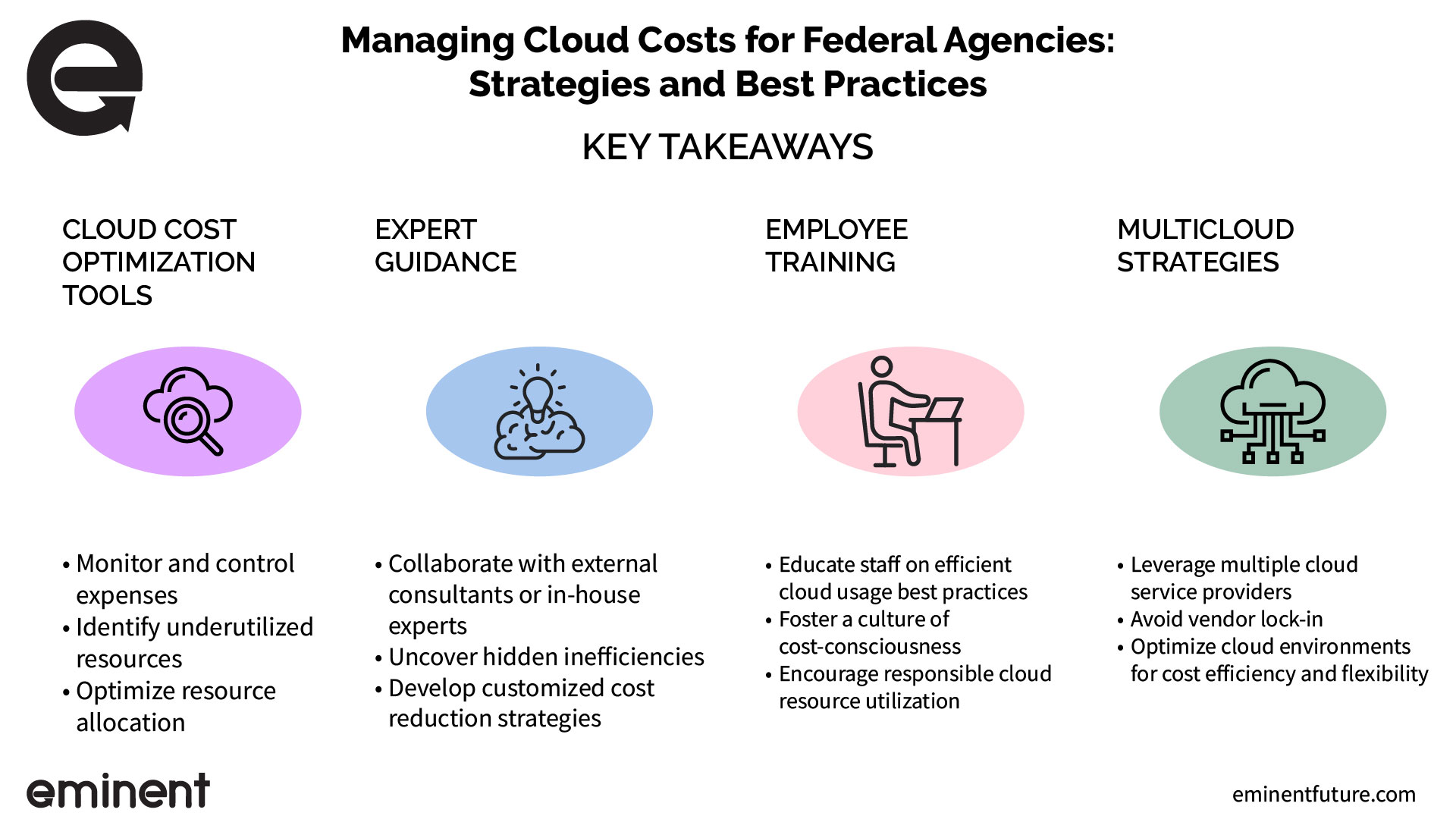
In today’s increasingly digital world, cloud services have become an essential component for federal agencies, enabling them to streamline processes, enhance collaboration, and ensure data security. However, with the rapid adoption of cloud technologies comes the challenge of effectively managing cloud costs. As federal IT budgets continue to be scrutinized, it is critical for agencies to implement strategies and best practices that maximize the value of their cloud investments while keeping costs under control.
This article will delve into the complexities of cloud costs faced by federal agencies and provide actionable insights on how to effectively manage them. By adopting these strategies and best practices, federal IT leaders can ensure that their agencies benefit from the agility, scalability, and innovation offered by cloud services without compromising their budgetary constraints or mission-critical objectives.
Factors contributing to escalating cloud costs

Understanding the factors contributing to escalating cloud costs is crucial for federal agencies to effectively manage their IT budgets and optimize resource allocation. In this section, we will discuss the key drivers of increasing cloud expenses, ranging from the rapid digitalization and remote work trends to the growing data storage and processing requirements, as well as the complexities of billing and usage models. By examining these factors, federal IT leaders can develop a comprehensive approach to cloud cost management and ensure the efficient use of their agency’s resources.
- Digitalization and remote work have increased reliance on cloud infrastructure, resulting in higher usage and costs for federal agencies.
- Federal agencies generate and process large volumes of data, driving up demand for cloud resources.
- Emerging technologies like AI and machine learning require scalable and flexible cloud infrastructure.
- Complex billing and usage models offered by cloud service providers make it difficult for federal agencies to predict and manage costs.
The shift towards digitalization and remote work has accelerated the adoption of cloud services in federal agencies. As a result, there is an increased reliance on cloud infrastructure to support telework, virtual meetings, and secure data sharing. This growing dependence on the cloud has led to higher usage and, consequently, rising costs.
Federal agencies are generating and processing larger volumes of data than ever before. The need to store, analyze, and secure this data has driven up the demand for cloud resources, contributing to escalating costs. Additionally, emerging technologies like artificial intelligence and machine learning further increase the need for scalable and flexible cloud infrastructure.
Cloud service providers often offer complex billing and usage models, making it difficult for federal agencies to accurately predict and manage costs. Pricing structures can vary depending on factors like data storage, data transfer, computing power, and the specific services used. Navigating these complexities and identifying cost-saving opportunities can be challenging for IT departments.
KEY STRATEGIES FOR MANAGING CLOUD COSTS

To successfully manage cloud costs, federal agencies must adopt proactive and efficient strategies. Here, we outline several key approaches that can help federal IT leaders optimize their cloud investments while keeping costs under control.
Cloud Cost Optimization Tools
Utilize cloud cost optimization tools like CloudHealth, CloudCheckr, or Azure Cost Management to monitor usage, set budgets, and analyze cost trends. These tools provide insights into resource allocation, identify underutilized resources, and suggest potential cost-saving opportunities.
Cloud cost optimization tools can help agencies gain visibility into their cloud expenses, allowing them to make data-driven decisions and effectively manage budgets. By adopting these tools, federal IT leaders can ensure transparency and accountability in their cloud spending.
Engage Cloud Experts
Collaborate with cloud cost management experts, either by engaging external consultants or developing in-house expertise. These professionals possess specialized knowledge in cloud cost optimization and can provide tailored guidance based on the unique needs of each agency.
Expert support can help federal agencies uncover hidden inefficiencies and design customized cost reduction strategies. By working with experts, agencies can proactively manage cloud costs and maximize the return on their investments.
Awareness and Training
Implement training programs to educate employees about the cost implications of their cloud usage. Teach them best practices for efficient cloud resource utilization, such as turning off unused resources, selecting the right instance types, and using reserved instances when appropriate.
Foster a culture of cost-consciousness within the agency, motivating employees to actively consider the financial impact of their cloud usage decisions. This collective effort can contribute significantly to reducing overall cloud costs.
Multicloud
Diversify your agency’s cloud services by adopting a multicloud strategy that leverages the offerings of multiple providers. This approach allows agencies to benefit from the unique strengths and cost structures of different providers, enhancing both flexibility and cost efficiency.
By employing a multicloud strategy, federal agencies can avoid vendor lock-in, negotiate better pricing, and optimize their cloud environments to minimize costs. Additionally, this approach facilitates workload portability, making it easier to move applications and data between different cloud platforms as needed.
Key Takeaways

Final Thoughts
By embracing these strategies, federal agencies can effectively manage their cloud costs and ensure that they are making the most of their cloud investments while minimizing the financial burden on their budgets.
Effective cloud cost management is essential for federal agencies to optimize their IT budgets, support mission-critical projects, and demonstrate the return on investment of their cloud initiatives. By understanding the factors contributing to escalating cloud costs and adopting proactive strategies, such as leveraging cloud cost optimization tools, engaging experts, providing employee training, and embracing multicloud strategies, federal IT leaders can successfully navigate the complexities of cloud spending.
The insights and best practices shared in this article can serve as a roadmap for agencies looking to enhance their cloud cost management efforts. As cloud services continue to play a vital role in the operations of federal agencies, it is crucial for IT leaders to prioritize cost management and adopt the most effective practices to ensure that their organizations can benefit from the many advantages that cloud technology offers, without compromising their budgets or mission objectives.
By implementing these strategies and learning from the success stories of other agencies, federal IT departments can confidently navigate the evolving landscape of cloud services, ensuring that their cloud investments support their mission and contribute to a more efficient and innovative government.



